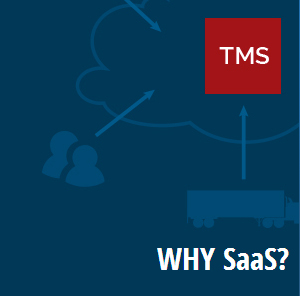 |
June 5, 2014 - Supply Chain Flagship Newsletter |
 |
| THIS WEEK'S SPONSOR: GENPACT |
 |
|
 |
|
||||||||||||||||||||||||||||||||||||||||||||||||||||||||||||||||||||||||||||||||||||||
GDP and the Supply Chain
|
|||||||||||||||||||||||||||||||||||||||||||||||||||||||||||||||||||||||||||||||||||||||
| GILMORE SAYS: |
"I believe understanding GDP is a component of supply chain finance literacy." WHAT DO YOU SAY? |
And this isn't just an academic exercise. GDP calculation has many intersections with the supply chain. Among them, changes in inventory levels impact GDP, sometimes in a big way. Companies like FedEx, UPS and many others use their own proprietary estimates of GDP over a period as the key factor in how much they might invest in distribution hubs, trucks and planes. And for many companies, estimates of GDP growth impact mid- and long-range demand plans, again directly impacting supply chain decisions.
Supply chain investment in people, space, equipment, etc. is often directly connected to increases in volumes, and volumes are in general tied at the hip to economic growth (even if there are always exceptions such as Amazon, and of course market share is always being won or lost by individual companies). Many companies are expanding internationally in large part because GDP growth in China, India etc. has been much higher than in developed economies.
Additionally, many observers continue to say we are just a couple of quarters of strong (3% plus) GDP growth to cause huge transportation capacity issues in the US, notably in the truckload sector. I think that prediction is accurate but never arrives because we just can't string together two strong growth quarters.
So, what is GDP? Let me first say that, as is usually the case, trying to find clear understandable answers on what GDP is and how it is measured is a frustrating exercise. That is in part why I am writing this column, to (I hope) add some clarity for all of us.
GDP is meant to measures the value of the goods and services produced by an economy in a given time period. The US has one way to do it, which is heavily dependent actually on spending numbers by business, consumers, and government, not (yet) the measure of output. Other countries use similar but not identical approaches, so direct comparisons between countries is not precise. China never seems to come in with a GDP below its official target levels, for example.
Another key point is the difference between "nominal" and "real" GDP. Nominal GDP is calculated using current prices. So in periods of high inflation, nominal GDP might be seen as rising rapidly. But real GDP is nominal GDP reduced by an inflation factor, to better measure the true growth in output. But that inflation factor is not without controversy, as I will explain later.
There are, it turns out, a number of different approaches for measuring a country's total output. In the US, the official approach for measuring GDP, which is calculated by the Bureau of Economic Analysis, a division of the Commerce Dept., is as follows:
GDP = private consumption + government spending + investment + net exports
Ah that it was just that simple. But within each of these categories, especially the private consumption number, are a series of "accounts."
You may have heard, for example, as I have many times, that consumer spending is either two-thirds or 70% or something of the economy. That is in reality a bit deceptive.
Under the private consumption category, for example, what we would consider consumer spending in a general sense - food, cars, flat screen televisions and the like - actually only represents around 40% of the US economy in any given period these days.
So why do we hear about the 70% figure? Because that is roughly the private consumption account share of GDP, but in addition to what we might call real consumer spend is added all kinds of other stuff within the private consumption category. That includes, for example, most health care spending, including Medicare outlays, insurance payments from company coverage and more. It also includes something called "imputed services," which believe it or not assigns a value to people taking care of their homes, receiving free checking from their bank, and other "output" for which no money actually changes hands.
There is some other weird stuff in the private consumption number that is just too abstruse to go into here. But real consumer spending as noted in more like 40% of GDP, not 70%.
The government component is the sum of government expenditures on final goods and services. It includes salaries of public servants, purchase of weapons for the military, and any investment expenditure by a government.
It does not include any transfer payments, such as social security or unemployment benefits.
Investment primarily measures capital-related spending by business, from machinery and buildings to software and even inventories.
Net exports basically subtracts imports from the export total. In China, this would be a positive number. In the US, with never ending trade deficits, it is a negative number.
Add these four categories together, and you get GDP, at least in the US.
There are some obvious supply chain connections. We know that most US companies are sitting on huge piles of cash, much of it overseas, rather than upping their investments in facilities, equipment, technology, etc.
That relative lack of investment is certainly an important factor in the sluggish GDP growth. The rapid economic growth in the 1980s, for example, was significantly fueled by strong business investment.
If you are being a good supply chain manager, and reducing your inventory levels, it also has the effect of reducing GDP. So, when inventory levels plummeted in 2009, it added to the reduction in GDP growth (which went negative for a while of course) on top of the big hit from lower consumer spending. I will note that in general, if a company used the cash savings from lower inventory levels to hire more employees or make capital investments it would be largely a wash, but that isn't of course directly tracked.
Next exports - when a company closes a factory in Michigan and moves it to China, the value of those now imports in essence is subtracted from GDP. In addition, if we assume that most of the workers whose jobs are lost reduce their spending, at least for some period of time until and if they find comparable employment, that reduction would also lower GDP by that amount.
The US trade deficit in 2013 was a staggering $471 billion dollars, though believe it or not that was the lowest level since 2009. (While rising exports and some reshoring might have played small factors here, the real driver was US energy production soaring, which reduced oil imports significantly).
US nominal GDP was about $16.8 trillion in 2013. So (I am sure there is somehow more complexity than this), the trade deficit ($471 billion) divided by the size of the economy equals 2.8%. Real GDP growth in the US last year was just 1.9%. Reducing the trade deficit would have upped that number substantially - heaven forbid actually having a trade surplus.
So what may be good for any individual company is not so good for the economy as a whole.
To get from nominal GDP to real GDP, nominal GDP is reduced by an inflation factor. The consumer price index, you assume? While the calculation of the CPI is complex and controversial enough, the BEA adds more complexity to the process to come up with its factor. Many believe it generally understates inflation, and thus overstates real GDP growth.
Just recently, the BEA has started to produce another economic measure - it's called "gross output," and it measures the "make" economy - the total sales from the production of raw materials through intermediate producers to final wholesale and retail trade. Valued at more than $30 trillion at the end of 2013, it's almost twice the size of gross domestic product, and far more volatile. That $30 trillion total comes from much double counting from raw materials moving through stages to become finished goods, but many economists believe it is a superior measure - or at least an important alternative - versus GDP. More on this soon.
I hope some of this helped and made sense. I believe understanding GDP is a component of supply chain finance literacy.
Did you find Gilmore's GDP discussion useful? Do you have anything to add? Let us know your thoughts at the Feedback section below.
![]()
| View Web/Printable Version of this Column |
|
|
|
YOUR FEEDBACK
We received a a scattering of feedback from our "trip reports" from various conference over the past few weeks. You will find some of the comments stemming from those summaries below/
Feedback on the Supply Chain Talent Crisis (Gartner Summary):
We've got to get out if denial and into proactive, sustainable, long-term solutions. Art van Bodegraven
|
||
| On the Bullwhip Effect (JDA Summary): | ||
Regarding the Bullwhip effect I invariably test it out on my training courses and the syndrome is alive and kicking 50+ years on! May I suggest one reason for its longevity. The right people in the customer/supplier are just not talking to the right people in the supplier/customer. If you are a customer who is having problems with order fulfilment then the short term action is naturally to increase the order and the cycle is started. Too often the customer does not know who to talk to so a difference can be made. Change requires closer integration of strategic, tactical and operational activities and that is rarely easy, particularly in the supply chain where "steady state" is an environment achieved only momentarily, and then so fleetingly that it is invariably too late to take advantage of. Sorry about the pessimism but at least we are talking about the issue and spreading awareness can only help to diminish the problems caused by failure to identify true demand. |
||
On a Hierarchy of Supply Chain Metrics (Gartner Summary):
|
||
Gartner is right: "Forecast Accuracy" should be the pre-eminent supply chain measure and here is the reason why.
Consumer spending represents two thirds of the economy and 75% of this spending is done in the Consumer Packaged Goods Industry. Forecasting accurately what consumers will buy in a given store has more overall impact on manufacturing & logistics costs than anything else I can think of. It effects everything we do up and down the entire retail supply chain. Andre' Martin |
||
| On SCDigest Conference Coverage: | ||
I have often wondered why others don't really do what you do with these conference: smart, succinct summaries and insight, usually just a day or two after the event ends. I have simply come to the conclusion that it is just that no one else can really do what you do. Congratulations.
Please keep up the good work, it is very helpful.
Dwayne Koch |
||
SUPPLY CHAIN TRIVIA ANSWER
Q: What percent of total US freight revenue is collected by trucking companies?
A: An amazing 81.2% in 2013, up from 80.7% in 2012, according to new data from the American Trucking Associations, on 69.1% of total tonnage.
| © SupplyChainDigest™ 2003-2013. All Rights Reserved. SupplyChainDigest PO Box 714 Springboro, Ohio 45066 |
POWERED BY: XDIMENSION
|








